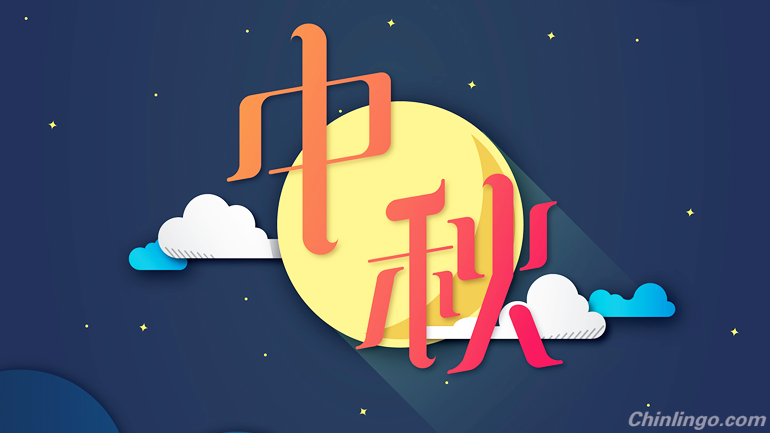
On September 27th of 2015, a traditional Chinese holiday called The Mid-Autumn Festival will be celebrated. For the entire Chinese nation, it is a time to gaze at the moon and enjoy delicious mooncakes! For those studying Mandarin, it is also a great time to learn more about Chinese customs.
Mid-Autumn Festival has distinctive traditions. How does language reflect them? What can the etymology of Chinese characters tell us about their deep roots? Let's see…
Secret of the name
"Mid-Autumn Festival" is the straight-forward translation of the Chinese name of the festival: 中秋节.
#1: "中(zhōng)"
The holiday is celebrated close to the autumnal equinox, on the 15th day of the eighth month in the Chinese calendar (almost in the middle of the month). Not surprisingly, the first character of its name is "中" (means "middle").
#2: "秋(qiū)"
The next character of the name is 秋, which means "autumn."
In the fall, the Ancient Chinese would burn the fields so that they could kill the locust eggs. This prevented swarms of locust from eating the next year's crops. So fall 秋 consists of grain 禾 and fire 火. It is logical, isn't it?
Famous Traditions: Moon Gazing and Family Reunion
#3: "月(yuè)"
One of the most popular traditions related to this holiday is gazing at the Moon (due to the fact that Mid-Autumn Festival is celebrated during a full moon). Moon traditionally plays an important role for Chinese people. Therefore, the character 月 is one of the most commonly used:
The full moon is traditionally a symbol for family reunion 家团圆 (jiā tuán yuán). This concept is still crucial for Chinese people. Celebrating Mid-Autumn Festival by coming together as families to eat, drink, and be merry is not uncommon.
#4: "家(jiā)"
家 in 家团圆 depicts a house with a pig inside. Since ancient Chinese was an agricultural society, livestock was the main property of each family, and the pig was the most common livestock.
#5: "团(tuán)"
The ancient form of 团 is related to a three dimensional enclosure.
#6: "圆(yuán)"
The last character for 家团圆 -圆- is the most important, since it means "circle" and derives from a pictogram of a round enclosure (or it may be a round table with food on it).
#7: "舞(wǔ)"
Ancient dancers commonly used hairy ornaments; thus, the ancient form of 舞 is in the shape of a dancer with hairy tails or dangling animal skins in both hands.
Delicious Food
#8: "饼(bǐng)"
During the Mid-Autumn Festival, people eat food that looks like the Moon. One of the most well-known is moon cake – a beautifully ornamented round-shaped pastry with fillings. We already know the etymology of 月. As to the character 饼, meaning "cake, pastry, something round and flat," its origin may be linked to baking in the stove.
#9: "果(guǒ)"
Autumn is a time of harvest, as well, so Chinese people traditionally eat seasonal fruits during the Mid-Autumn Festival.
The ancient form of 果 is like fruit growing from the tree.
#10: "食(shí)"
Besides those mentioned above, there are lots of other tasty food that is traditionally served during Mid-Autumn Festival – 食品.
The ancient form of 食 is in the shape of a human mouth near a food container.



 闽公网安备 35020302035673号
闽公网安备 35020302035673号
0 responses on "10 featured Chinese characters for Mid-Autumn Festival"